
The night light has become an essential feature on desktop and mobile devices. It makes working at computers at night a lot less painful for the eyes.
On desktop Linux, GNOME and KDE desktop environments provide a built-in nightlight feature. However, Linux Mint’s flagship Cinnamon desktop didn’t get this feature out of the box for a long time.
The recent Linux Mint 22.1 Xia finally offers a built-in nightlight feature. For older Mint versions, things are slightly complicated.
Let's see how you can enable the night light feature in Linux Mint.
Enable night light feature on Linux Mint 22.1 and above
With Linux Mint 22.1 Xia, setting nightlight is as simple as enabling a toggle button in system settings.
Click on the Linux Mint menu on the panel and search for “Night Light”. Enter to open the night light settings.
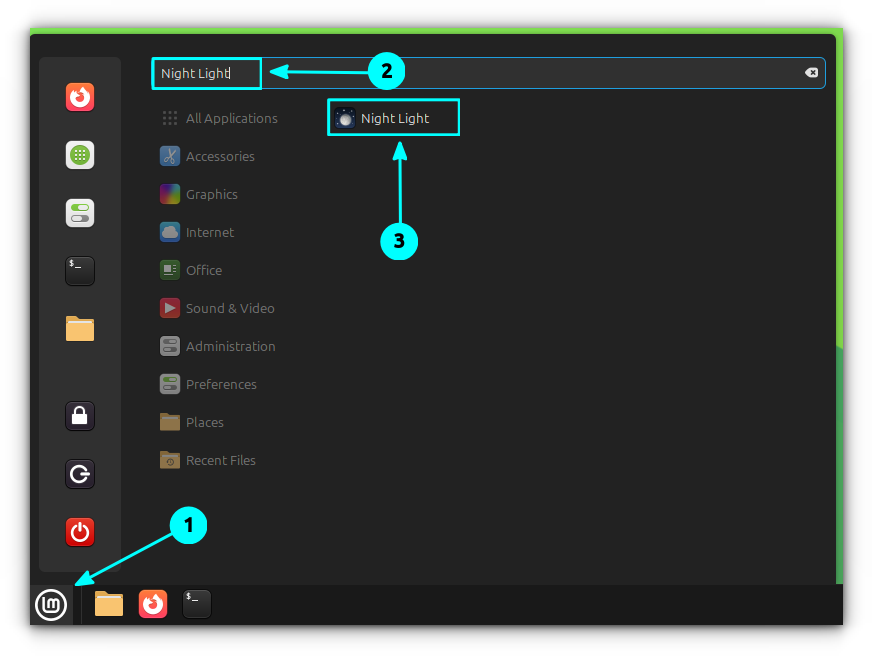
Inside the settings, enable the Night Light toggle button.
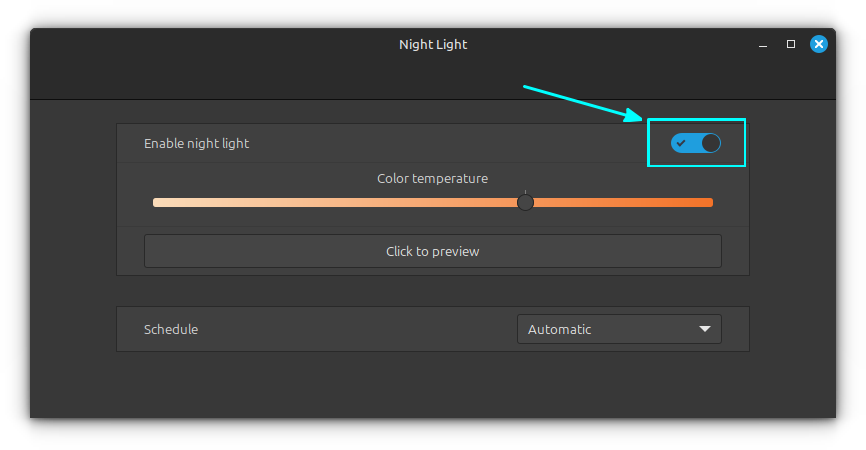
This will set the default color temperature automatically. Also, the night mode will be enabled automatically at sun set based on your system timezone.
You can slide the temperature bar to adjust the temperature and use the Preview button to view the result, that will be applied at sunset.
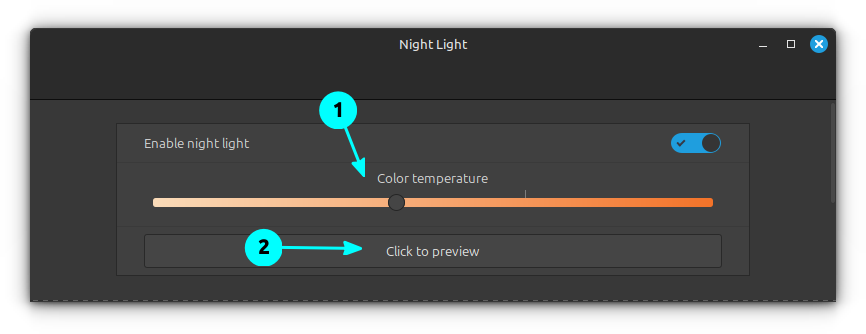
Change the activation time
If you are not interested in the default schedule time of Night Light, you can change it to custom time limits. Use the dropdown button for the “Schedule” option and change it to “Automatic” to “Specify start and end times”.
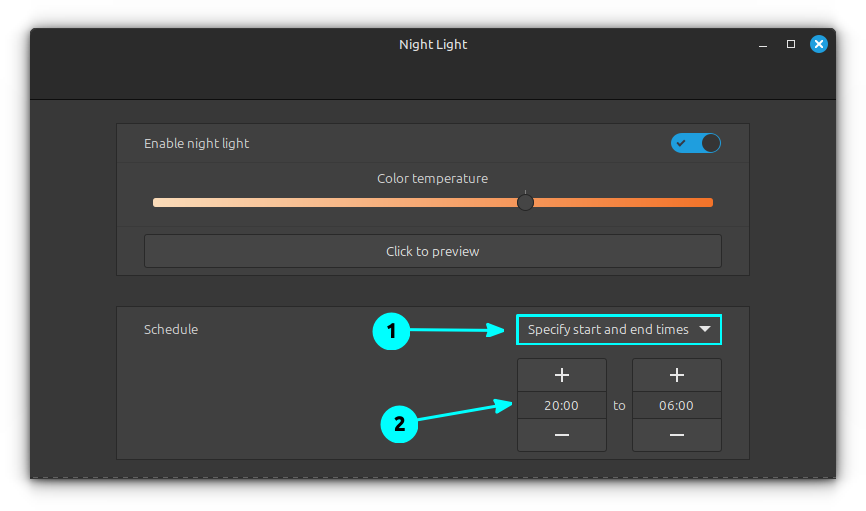
Now, change the start and end time according to your preferences.
Using Night Light in Linux Mint 22 and older
Earlier Mint used to include Red Shift (redshift-gtk)by default to provide the night light feature.
But it is not installed by default anymore. Red Shift used Mozilla's location service through geoclue2 package. Mozilla has retired this service and hence Mint decided to stop offering Red Shift out of the box.
redshift-gtk and manually configure it with your location to get night light feature in Mint 22 and older versions. You need to know the longitude and latitude of your location.Install and use Redshift-gtk manually
Even though the Linux Mint team decided against the inclusion of Redshift in the installations, the package is still available in the repositories. Install it using the command:
sudo apt install redshift-gtkOnce installed, you need to edit the configuration files. The configuration file for the Redshift should be present at ~/.config/redshift.conf
Use this command to open the config file in Xed editor:
xed ~/.config/redshift.conf &Inside this file, add the location details. For this, I will be using an example config provided on the Redshift man page, with slight variation in color temperature and latitude and longitude value.
[redshift]
temp-day=6500
temp-night=3400
gamma=0.8
adjustment-method=randr
location-provider=manual
[manual]
lat=40.71
lon=74.00Here, I used the latitude and longitude values for New York. You can get the value simply through a web search of your city, let's say “New York latitude and longitude”.
Save the file. Now you can open Redshift from the Cinnamon menu button.
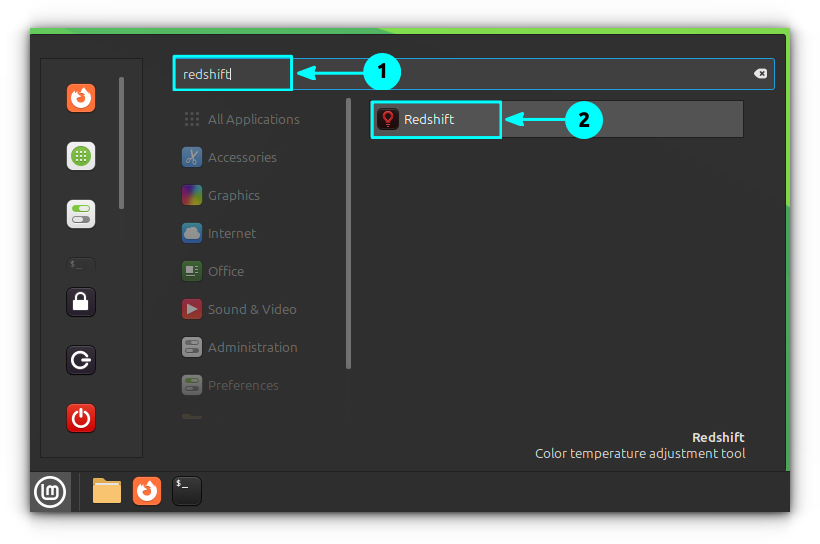
You can see a panel item is opened for Redshift. Now, the screen temperature will be applied based on day/night of your location.
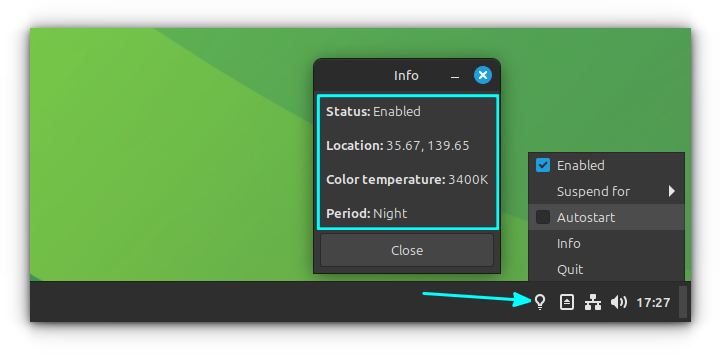
Other methods
On Linux Mint, there are some applets, that use Redshift and provide the Night Light features. But there are some important points to be noted before using them:
- Since they use Redshift, you need to manually set the latitude and longitude value of your city in the respective applet settings.
- These applets comes with a warning about possible Cinnamon crash/freeze. So, if you experience such issues, disable the extensions.
- You should have the
redshiftpackage installed. - There is no need to have
redshift.conffile. In fact, the QRedshift applet will warn you to remove the configuration file if it is present. - Applets can be installed from the Applets application on Linux Mint.
Redshift
This simple applet allows you to enable Night Light, change the color temperature etc. You can right-click on the applet and select configure to get the applet configuration.
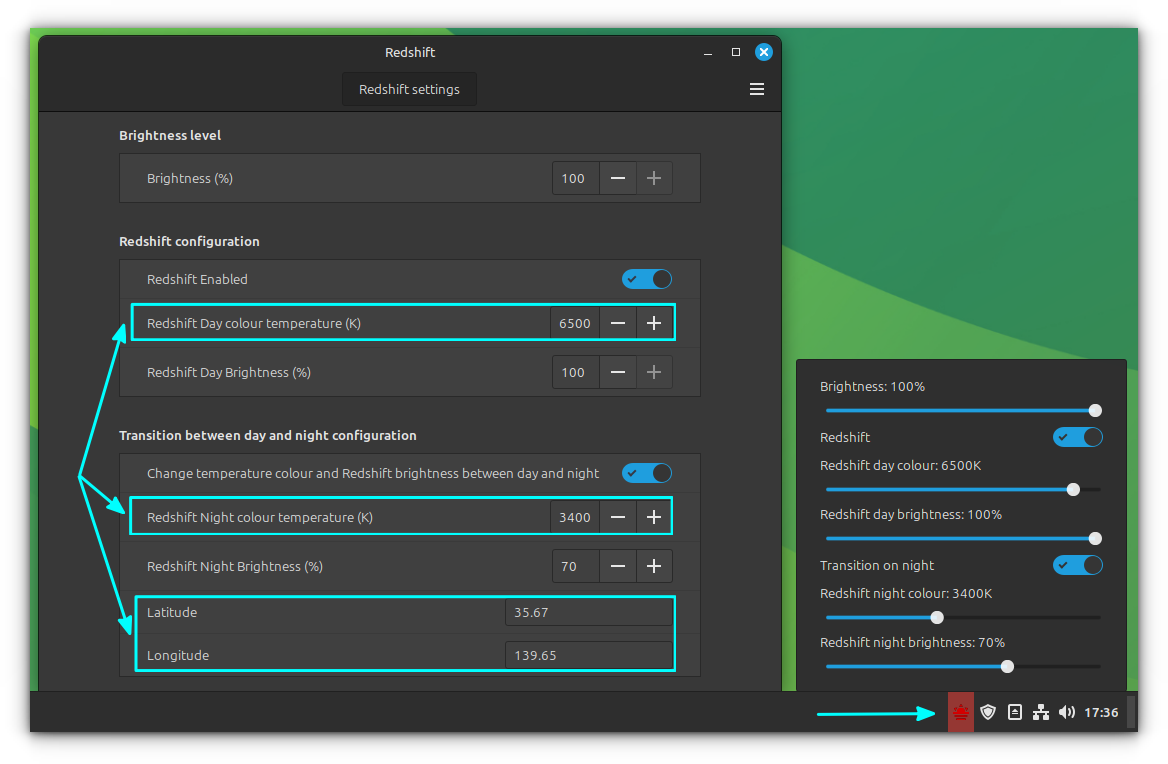
QRedshift
This is a similar extension based on Redshift. It offers an intuitive panel applet menu for color temperature managing and more.
This extension too provides a graphical configuration window, where you can change settings like the latitude and longitude of your city.
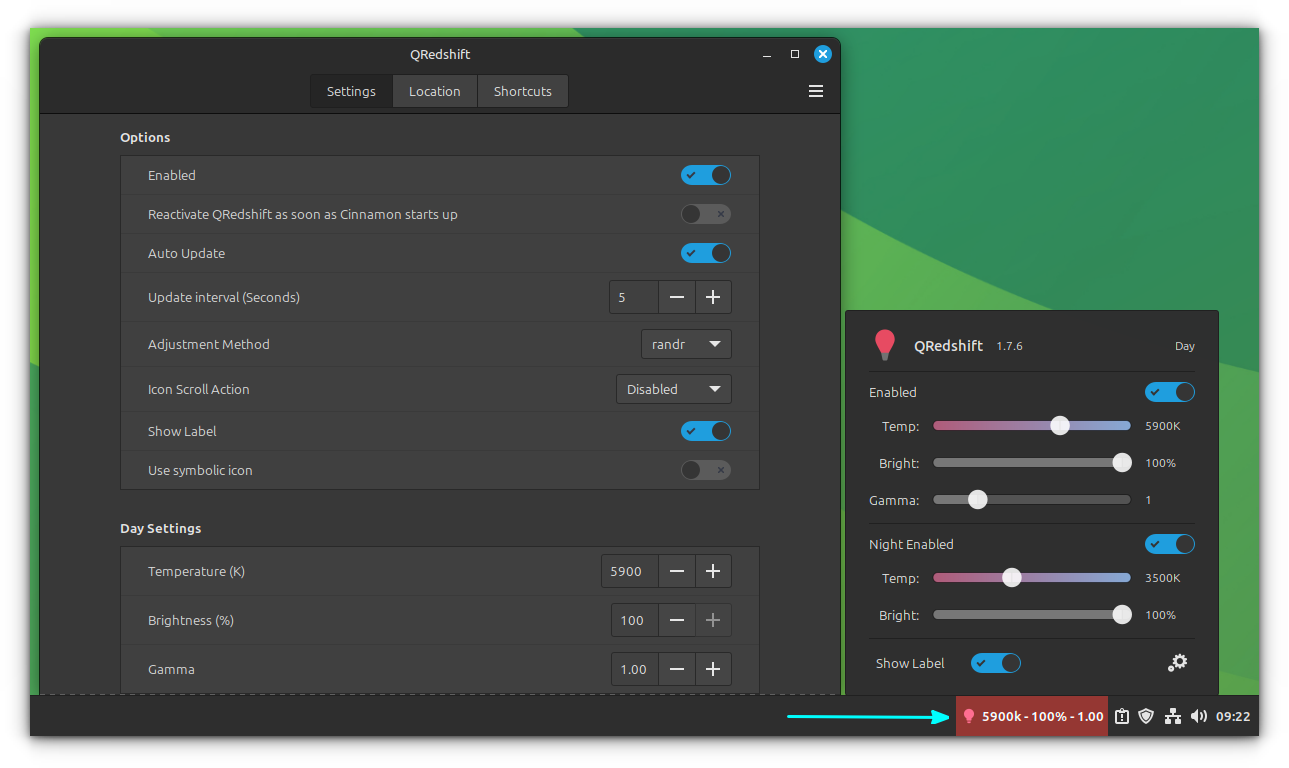
I hope this quick post helped you to install Redshift in Linux Mint and saved your eyes.

